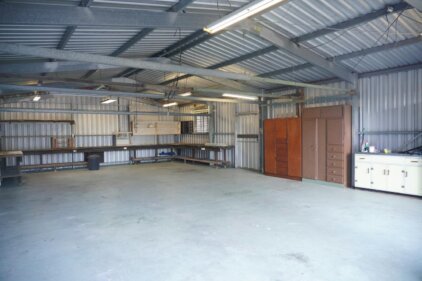The Importance of Sustainable Construction
Sustainable construction is not just a buzzword; it is a necessity for our planet’s well-being. The construction industry accounts for a significant portion of global energy consumption and greenhouse gas emissions. By embracing sustainable materials, we can mitigate these negative impacts and contribute to a greener future. Sustainable construction practices not only benefit the environment but also improve the quality of life for occupants, enhance the reputation of companies, and create healthier communities.
Benefits of Using Sustainable Materials in Construction
Using sustainable materials in construction offers a plethora of benefits. Firstly, these materials are renewable and recyclable, reducing the demand for virgin resources and minimizing waste. They also have a lower carbon footprint compared to conventional materials. Secondly, sustainable materials often provide superior insulation properties, leading to more energy-efficient buildings. This translates into reduced energy consumption and lower utility bills for occupants. Additionally, sustainable materials can improve indoor air quality and occupant health by minimizing the use of toxic chemicals commonly found in traditional construction materials.
Sustainable Materials Commonly Used in British Construction
In the UK, several sustainable materials have gained popularity in the construction industry. Timber, for instance, is a renewable resource widely used for structural elements and cladding. Its excellent thermal properties and low embodied energy make it an attractive choice. Another commonly used material is recycled steel, which reduces the need for mining and significantly lowers carbon emissions. Additionally, innovative materials like cross-laminated timber (CLT) and hempcrete are gaining traction due to their durability, low environmental impact, and high energy efficiency.
Case Studies of Successful Sustainable Construction Projects in the UK
Numerous successful sustainable construction projects have been completed in the UK, showcasing the feasibility and benefits of using sustainable materials. One remarkable example is the Bullitt Center in Seattle, Washington. This six-story office building achieved the Living Building Challenge certification, one of the most stringent sustainability certifications in the world. It incorporates sustainable materials such as FSC-certified wood, rainwater harvesting systems, and solar panels to achieve net-zero energy consumption.
Challenges and Barriers to Implementing Sustainable Materials in Construction
While the adoption of sustainable materials in construction is growing, several challenges and barriers hinder their widespread implementation. One primary challenge is the higher upfront cost of sustainable materials compared to traditional alternatives. However, it is essential to consider the long-term benefits and potential cost savings in terms of energy efficiency and maintenance. Another challenge is the limited availability of sustainable materials, which can delay construction timelines. Addressing these challenges requires collaboration between industry stakeholders, government support, and increased awareness.
Regulations and Certifications for Sustainable Construction in the UK
In the UK, various regulations and certifications promote sustainable construction practices. The Building Research Establishment Environmental Assessment Method (BREEAM) is one such certification that assesses the sustainability performance of buildings. BREEAM covers several categories, including materials, energy, water, and ecology, providing a comprehensive framework for sustainable construction. Additionally, the UK government has set targets for carbon reduction and energy efficiency, driving the adoption of sustainable materials in construction.
Tips for Incorporating Sustainable Materials into Construction Projects
Incorporating sustainable materials into construction projects requires careful planning and consideration. Firstly, it is crucial to conduct a life cycle assessment to evaluate the environmental impact of different material choices. This assessment should consider factors such as embodied energy, carbon emissions, and recyclability. Secondly, collaboration with suppliers and contractors who specialize in sustainable materials is key. They can provide valuable expertise and ensure the successful integration of sustainable materials into the project. Finally, ongoing monitoring and evaluation of the building’s performance can identify areas for improvement and inform future projects.
Future Trends and Innovations in Sustainable Construction
The future of sustainable construction in the UK holds exciting possibilities. One emerging trend is the use of 3D printing technology to create sustainable structures with reduced waste and faster construction times. Another area of innovation is the development of bio-based materials, such as mycelium-based composites, which offer high strength and low environmental impact. Additionally, advancements in smart building technologies and renewable energy integration will further enhance the sustainability of construction projects.
Conclusion: The Role of Sustainable Materials in Shaping a Greener Future for British Construction
In conclusion, sustainable materials are a vital component in building a greener future for British construction. By prioritizing sustainability, we can reduce carbon emissions, preserve resources, and create healthier built environments. The benefits of using sustainable materials extend beyond environmental impact, encompassing energy efficiency, occupant health, and long-term cost savings. While challenges exist, ongoing efforts in regulations, certifications, and innovation are driving the adoption of sustainable materials. Let us embrace these materials and work towards a sustainable future that leaves a positive legacy for generations to come.





